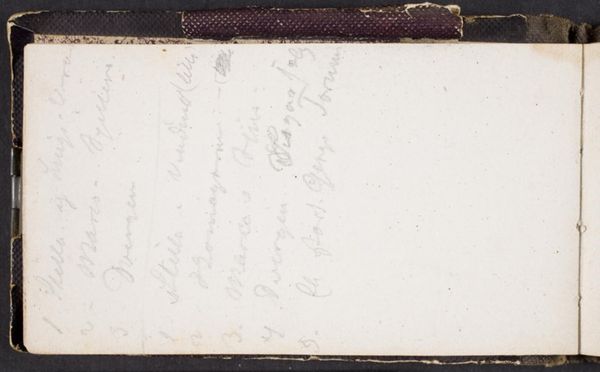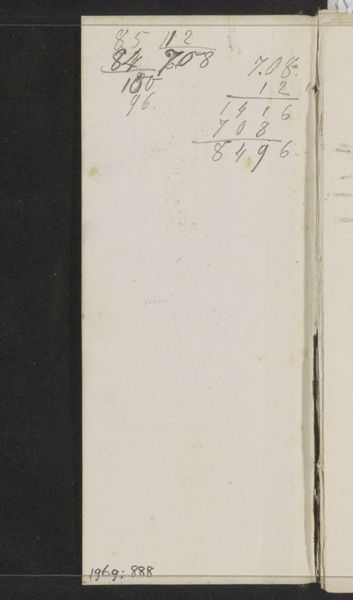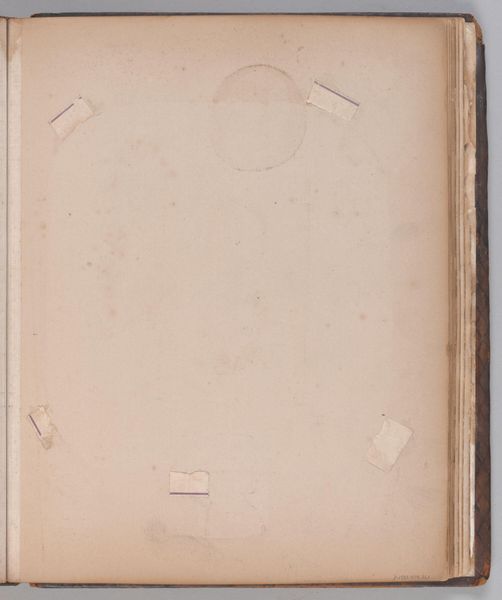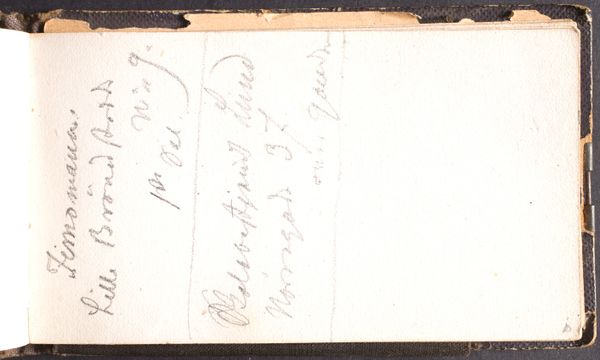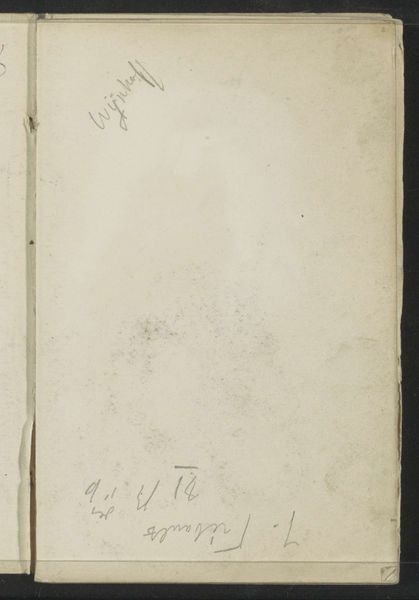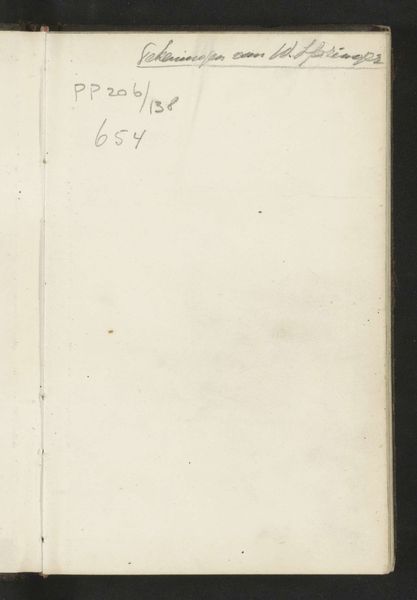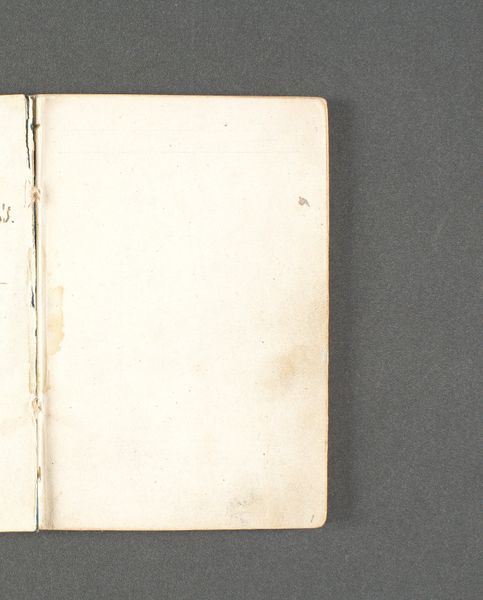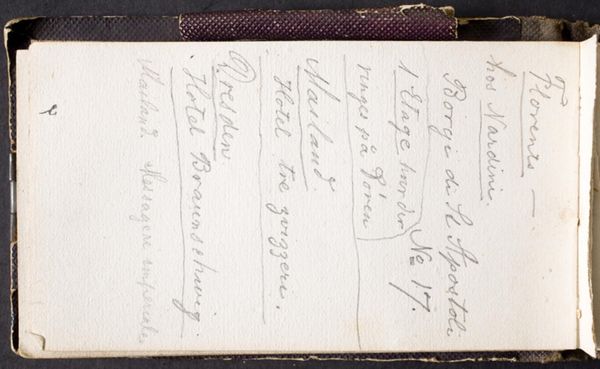
drawing, coloured-pencil, paper, typography
#
drawing
#
coloured-pencil
#
typography
#
paper
#
typography
#
coloured pencil
Dimensions: 71 mm (height) x 118 mm (width) x 14 mm (depth) (monteringsmaal), 63 mm (height) x 113 mm (width) (bladmaal)
Editor: We’re looking at “Notat” from 1864-1867, made by L.A. Schou using colored pencil on paper. It seems so simple, almost like just a quick note in a sketchbook, but there's a certain stillness to it. What do you see in this piece, beyond the initial impression? Curator: Beyond the surface, "Notat" functions as a powerful signifier of the artist's agency within a patriarchal society. In the 19th century, the act of simply owning a sketchbook, of claiming the right to observe and record the world, was a political act, particularly for a woman. Consider the restricted roles imposed on women and how artistic expression was often policed and confined. The unassuming nature of the 'note' becomes a quiet act of rebellion. Editor: So, even the act of creating a seemingly insignificant drawing held weight? Curator: Absolutely. The intimacy of the sketchbook allows a glimpse into the artist's private world, a space where she could explore thoughts and ideas freely, outside societal expectations. The very medium - colored pencil - speaks to accessibility and a certain informality, perhaps a deliberate rejection of the grand narratives typically associated with male artists of the time. How does this change your initial interpretation? Editor: It makes me think about the hidden layers of meaning we often miss in art. It transforms what seemed like a simple sketch into a statement. I will certainly be reevaluating similar works going forward. Curator: Exactly. By examining art through the lens of gender, power, and historical context, we gain a richer understanding of its significance and its potential to challenge societal norms.
Comments
No comments
Be the first to comment and join the conversation on the ultimate creative platform.

